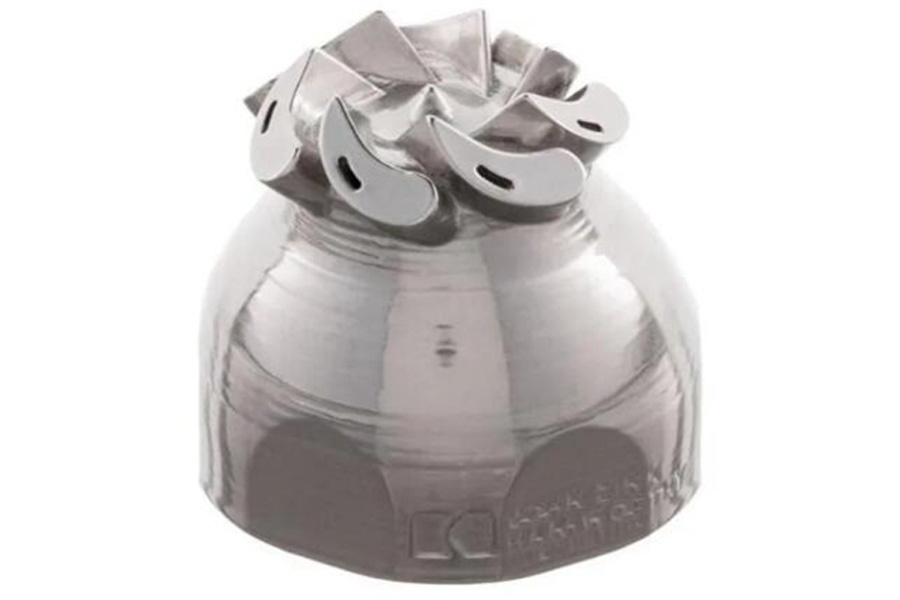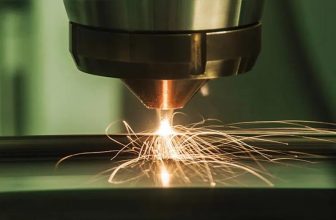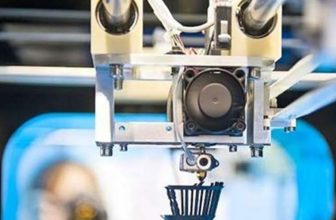
In this article, we will use the 3D printing fuel atomizer case to experience the solutions based on Desktop Metal’s technology and application-side development to improve fuel efficiency and reduce emissions.
The production of efficient and clean air combustion systems requires a variety of manufacturing technologies, but the fuel atomizers currently manufactured for oil tankers have reached a certain performance limit. In order to facilitate the processing of traditional technology, the atomizer is usually designed with a straight hole and a simple geometric shape, but the function is not ideal. In order to achieve design improvement and efficiency improvement, it means to switch from the original CNC machining to another manufacturing technology: metal 3D printing. John Zink Hamworthy Combustion is a company dedicated to clean air combustion technology and emission control systems. Since 2019, John Zink has used Desktop Metal’s Studio system to prototype and small batch production of various parts.
Desktop Metal’s technology allows John Zink to quickly produce 17-4 and 316L stainless steel parts with lower operating costs. Since installing the Studio system in 2019, John Zink has discovered many value-added applications of this technology. The first victory for the Studio system was in prototyping, which allowed the company to design and test metal parts before putting them into production through casting or other production techniques. However, the production of these prototypes did not give full play to the potential of additive manufacturing of complex products, because most of these prototypes will continue to be produced by casting or machining, so that the full advantages of additive manufacturing will not be fully utilized from the design source. Now, through metal 3D printing, John Zink can cost-effectively produce small-scale applications that can truly take advantage of additive manufacturing technology. For example, fuel atomizers are an example. Through 3D printing, its performance has been significantly improved, and through traditional manufacturing Technology cannot be achieved.
The original fuel atomizer is a small but simple machined steel part. Fuel and steam are mixed together in its internal chamber and discharged through a circular drilled channel. Combustion components like this can be classified according to their turndown ratios. This relationship describes the relationship between the maximum throughput and the minimum throughput. A higher ratio indicates a higher level of efficiency. When the ship is in port or traveling slowly, the turndown ratio of the machined atomizer under low load is 15:1.
Machined and 3D printed fuel atomizer
In order to improve the fuel efficiency of the atomizer, John Zink’s team first proposed three different designs. These designs were prototyped by Desktop Metal’s Studio System and then tested on site. The team finally integrated the atomizer with its base to eliminate the risk of leakage at the joint, and verified the design through computational fluid dynamics (CFD) simulations to refine the channel.
The final redesigned atomizer has fins like fins, which can reduce the total material required for parts and bean-shaped channels. Without additive manufacturing, this geometry would not be possible. The fuel atomizer will eventually be produced externally through selective laser melting metal 3D printing technology, but the Studio System combined with Desktop Metal can reach the final design faster and save the time and cost of the first run. Through the selective laser melting metal 3D printing technology, the fuel atomizer can be produced in 8 days at a cost of $1,200; in contrast, the metal 3D printing technology through binder jetting can be produced in 5 days at a cost of only $300.
Of course, the main advantage of the 3D printable design is that it improves the efficiency of the fuel atomizer. The adjustment ratio of the 3D printed fuel atomizer is 25:1. Compared with the original machined parts, the fuel efficiency is improved by 67%. The new design will also reduce fuel consumption per hour from 120 kg to 38 kg; it is understood that the new design can save approximately US$90,000 to US$160,000 per tanker in fuel costs per year.
To achieve fuller combustion, 3D printing is improving the utilization of human resources. Subversion does not only come from manufacturing technology, but also from function-oriented design.
Aerospace
In the aerospace field, the most typical case is GE fuel nozzles. In the fuel nozzle head, the labyrinth of complicated flow passages efficiently mix fuel and air, which can help the engine achieve superior performance. The success or failure of the LEAP project depends largely on the quality of the fuel nozzles. This structure is only the size of a walnut in the end, but there are 14 delicate fluid channels inside. Although this design is exquisite, it is too complicated to be made. GE tried 8 times through traditional manufacturing and processing methods, but failed each time. A problem that traditional methods cannot solve. A 3D printer is like a laser pointer. According to computer graphics, the fine metal powder is melted layer by layer into the final shape. It is suitable for the manufacture of complex and precise parts such as fuel nozzles. In addition, 3D printing produces much less waste than traditional production methods.
energy
In the energy field, 3 previously mentioned in the article “GE Improves the Premixing of Fuel and Air in Gas Turbines through 3D Printing”, 3D printing technology makes it a reality to manufacture complex-shaped premixers, and GE uses 3D printed premixers The resulting vortex motion helps atomize and mix liquid fuel with air, making it possible to use liquid fuel in addition to gaseous fuel. And it can produce a stable jet flame, which brings lower dynamics and a higher flame stability margin, and the high exit speed can be used to reduce or eliminate the risk of flame flashback.
In addition, in the energy field, the Siemens Finspang plant currently uses 3D printing to manufacture gas turbine parts, which are concentrated in the combustion chamber. Front end of SGT-800 combustion chamber. In the traditional production process, this part is composed of 13 parts and 18 welding points, but 3D printing technology prints it as a whole, and the production time is shortened from several months to one or two weeks. The optimized burner has an outer wall and an inner wall of a frame structure. This complex double-walled structural part is finally manufactured at one time by metal 3D printing equipment, without the need to weld several separate parts together.
car
In the automotive field, according to market observations, one of the more classic cases is the piston head of Ferrari racing car with dot matrix structure. The Ferrari racing engine is undertaken by the Italian Magneti Marelli auto parts company. The lightweight engine and the maintenance of a high level of strength are the two main factors that Magneti Marelli considers when designing the piston head of the engine. In 2017, the designer added a complex internal lattice structure to the parts, which can reduce the use of materials, reduce the weight of the parts, and ensure the strength of the high-impact area. The 3D printed steel alloy piston head has reshaped the design of the engine ignition chamber of the Ferrari 668. This part can withstand a pressure of 400bar, which enables the fuel to be fully burned.
motorcycle
Interestingly, better air and fuel mixing has also been applied to the motorcycle field. Motorcycle carburetor looks very complicated. By changing the atmospheric pressure in the engine and carburetor, the pressure is changed and the fuel and air pass through the carburetor. Flow. The air flowing through the carburetor will drive the fuel, and then the fuel will mix with the air. Through 3D printing, the design of a motorcycle carburetor composed of multiple components is optimized into an integral lightweight part, and the wiring channel and heat dissipation structure are also integrated in the part.
However, it is worth noting that these parts that make the combustion more fully can not be completed by 3D printing alone. The cooperation of 3D printing and traditional processing technology is indispensable. In this regard, the international additive manufacturing of GF processing solutions The solution is committed to truly achieving end-to-end integration in the workshop. The key to achieving a seamless and efficient workflow is to make adjustments to the existing software and hardware environment. This is another ability that needs to be emphasized to realize the potential of 3D printing.





